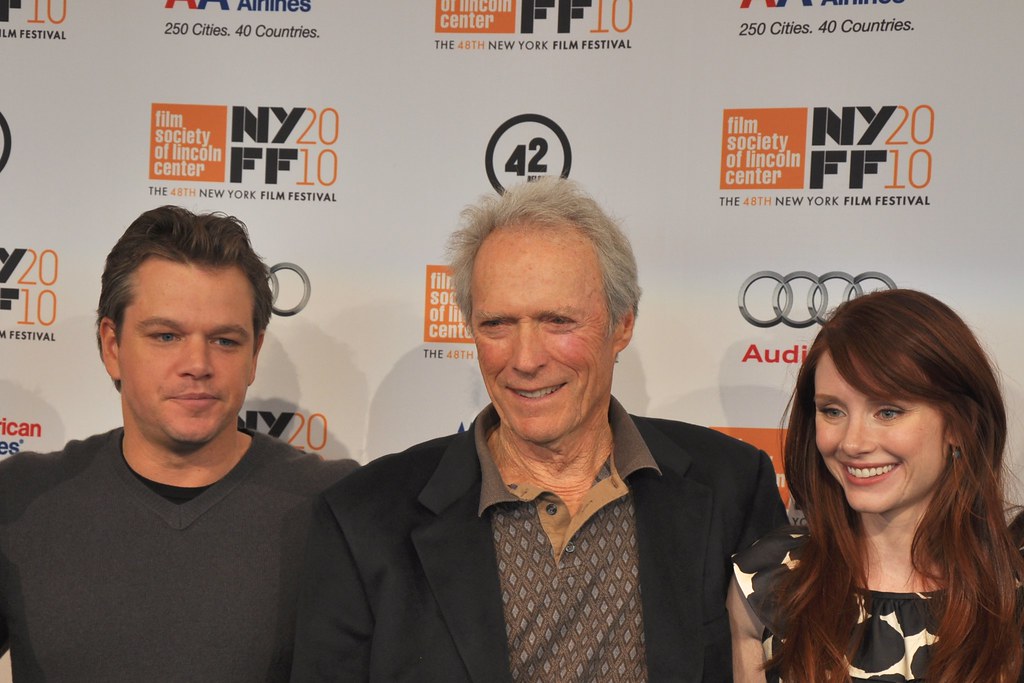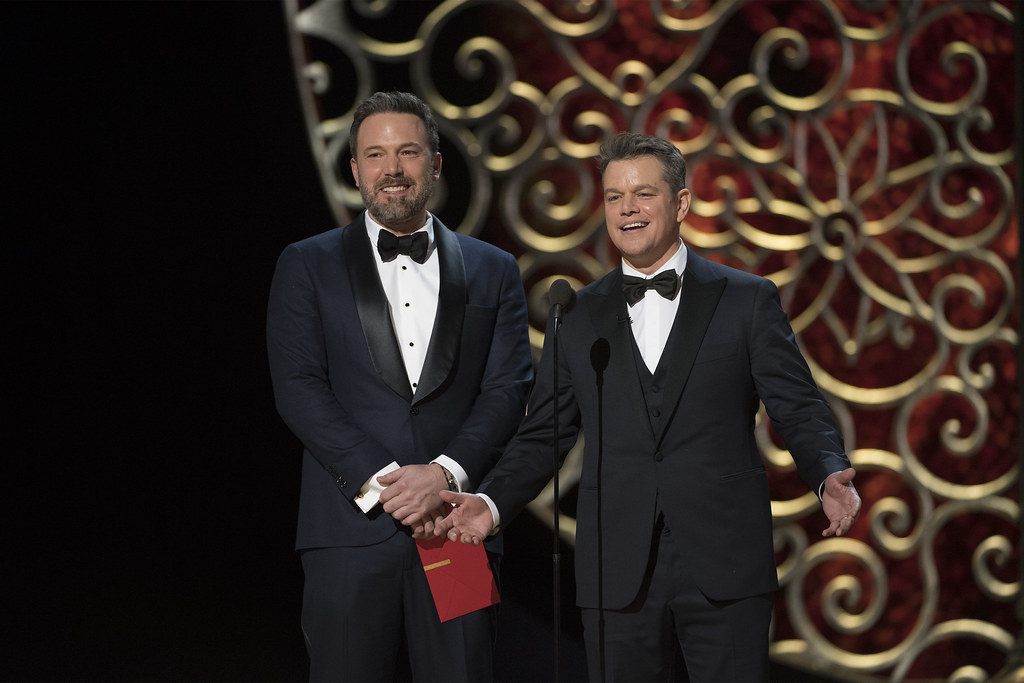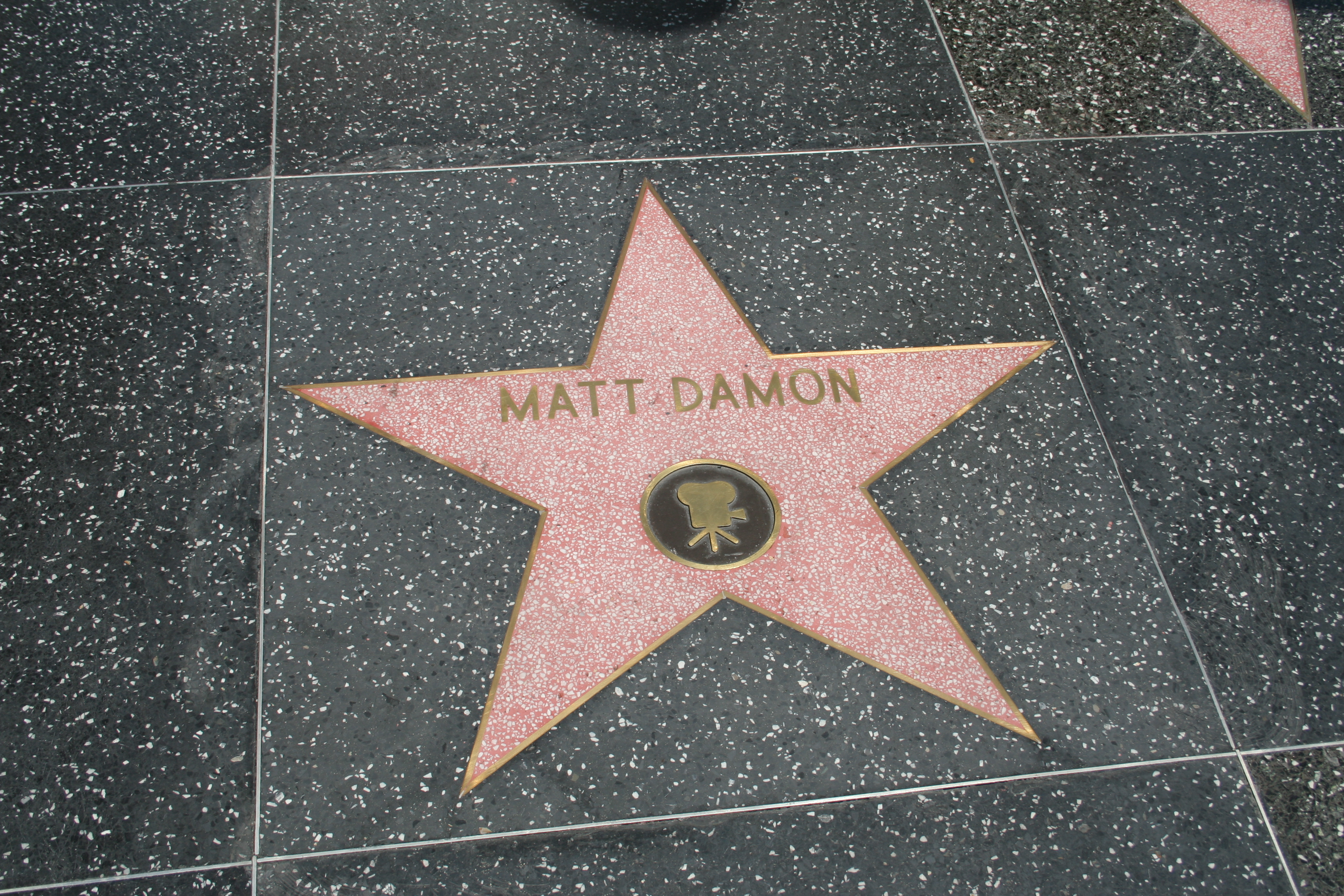
Matt Damon, the acclaimed Hollywood star, has built a career marked by iconic roles, critical success, and a reputation for integrity. From his early breakout with “Good Will Hunting” to his recent turn in “Oppenheimer,” Damon has consistently delivered captivating performances that have resonated with audiences worldwide. Yet, beyond the silver screen, his journey offers a trove of insights into the unpredictable currents of fame, fortune, and the evolving landscape of the entertainment business.
Recently, Damon has found himself in the spotlight not for a new film, but for candid revelations about past career decisions that have stirred widespread discussion. These aren’t just fascinating anecdotes; they offer a unique lens through which to examine the financial intricacies of Hollywood, the pressures of high-stakes choices, and the profound impact of loyalty and foresight in a fiercely competitive industry. His experiences, ranging from turning down a colossal paycheck to navigating early financial missteps, serve as a masterclass in both what to do and what to avoid when building a lasting career.
This article delves deep into some of Matt Damon’s most talked-about financial moments and career insights, exploring the multi-million dollar opportunities that slipped through his fingers, the foundational lessons learned from early financial blunders with Ben Affleck, and his astute observations on the seismic shifts reshaping the film industry today. It’s a journey through the choices, the regrets, and the enduring principles that have defined one of Hollywood’s most respected figures, offering valuable takeaways for anyone navigating their own professional path.

1. **The $250 Million “Avatar” Opportunity Cost: The Staggering Sum and the Story Behind It**Matt Damon once famously said, “You’ll never meet an actor who turned down more money than me.” This self-deprecating laugh hides a profound truth about one of Hollywood’s most talked-about missed opportunities: the decision to decline the lead role in James Cameron’s 2009 science-fiction blockbuster, “Avatar.” This choice didn’t just cost him a part in a cinematic phenomenon; it represented a potential windfall of a quarter of a billion dollars.
The financial implications were staggering because Cameron had reportedly offered Damon 10 percent of the film’s box office profits. “Avatar” would go on to defy all expectations, becoming the highest-grossing movie of all time with earnings exceeding $2.9 billion worldwide. For Damon, 10 percent of that figure translated directly into a reported $250 million paycheck that never materialized, a sum he himself confirmed, lamenting, “It’s something awful like that.”
This revelation, recently resurfacing in interviews and social media discussions, has captivated fans and industry insiders alike. It underscores the monumental financial consequences that can accompany career decisions in the entertainment industry, where a single choice can literally mean the difference between immense wealth and a legendary “what if.” Damon’s openness about this past career move has ignited conversations about the unpredictable nature of fame and fortune in show business, highlighting the incredible scale of the stakes involved.

2. **Prioritizing Loyalty Over Riches: Damon’s “Bourne” Commitment**While the prospect of a $250 million payday might tempt anyone, Matt Damon’s decision to turn down “Avatar” was rooted in a steadfast commitment to professional integrity and loyalty. He explained that he was “contractually obligated” to finish filming another installment of the “Jason Bourne” series. Walking away prematurely would have meant leaving that project unfinished, especially as it was still in post-production.
“I had a contract,” Damon stated, elaborating on his predicament. “I was in the middle of shooting the ‘Bourne’ movie and I knew we were going to need work at the end. I had to get it all the way to the finish line, and I would’ve had to leave early and leave them in the lurch. I didn’t want to do that.” His words paint a clear picture of a man who prioritizes his commitments and the welfare of his team above personal financial gain.
Indeed, Damon explicitly articulated that his decision stemmed from a deep sense of loyalty to his colleagues and respect for the filmmaking process. “I don’t know how I could have left all my friends in the lurch. You know what I mean?” he shared, emphasizing the human element behind his seemingly costly choice. This powerful stance highlights a rare quality in an industry often perceived as cutthroat, demonstrating that principles can indeed outweigh a colossal paycheck.

3. **The Unforeseen Rise of Sam Worthington: Pandora’s Unlikely Star**With Matt Damon out of the running, James Cameron faced the challenge of casting the lead role for his ambitious “Avatar” project. Ultimately, the role of Jake Sully went to Australian actor Sam Worthington. At the time, Worthington was relatively unknown, making his selection a considerable risk for a film of such a massive scale and financial investment.
Yet, Cameron’s gamble paid off spectacularly. Worthington’s portrayal of Jake Sully resonated globally, anchoring a film that broke new ground in visual effects and storytelling. The choice of a less established actor for such a pivotal role demonstrated Cameron’s confidence in his vision and the groundbreaking nature of the film itself, proving that star power isn’t always the sole determinant of a blockbuster’s success.
Worthington’s career trajectory was irrevocably altered by “Avatar,” thrusting him into international stardom. His success serves as a fascinating counter-narrative to Damon’s missed opportunity, illustrating how one actor’s commitment to an existing project paved the way for another’s breakout moment. It’s a testament to the unpredictable turns of fate in Hollywood, where risks can yield immense rewards for those who seize the chance.

4. **Krasinski’s Legendary Anecdote: “This Conversation in Space”**Matt Damon’s story of turning down “Avatar” has become a legendary tale within entertainment circles, particularly highlighted by a memorable interaction with his longtime friend and collaborator, John Krasinski. Damon recounted revealing the missed opportunity to Krasinski while they were working on their movie “Promised Land” in his kitchen one Saturday morning.
The reaction was immediate and dramatic. “He launches himself out of the chair,” Damon recalled, describing Krasinski’s disbelief. “He starts pacing the kitchen and says, ‘Nothing in your life would be different today if you had done that movie — except you and I would be having this conversation in space.’” This vivid anecdote perfectly encapsulates the sheer magnitude of what Damon had foregone.
Krasinski’s witty remark underscores the profound financial difference that role would have made, suggesting that Damon’s personal life and identity would have remained largely the same, but his material wealth would have reached cosmic proportions. Damon even quipped about the possibility of having a “space station” if he had taken the role, further cementing this interaction as an iconic moment in the saga of the $250 million decision.

5. **James Cameron’s Playful Dismissal: “Matt, Get Over It”**The story of Matt Damon’s “Avatar” regret eventually reached the ears of director James Cameron, who, in a BBC interview, offered a humorous and empathetic response. Cameron acknowledged Damon’s continued introspection over the decision, stating, “He’s beating himself up over this.”
With a laugh, Cameron added some advice for the superstar: “And I really think, you know, ‘Matt, you’re kind of like one of the biggest movie stars in the world — get over it.’” This lighthearted perspective from the film’s visionary director provided a comforting reassurance that Damon’s career certainly didn’t suffer from the choice, despite the monumental sum involved.
Cameron also confirmed Damon’s reasoning, acknowledging that “he had to do another ‘Bourne’ film, which was on his runway, and there was nothing we could do about that. So he had to regretfully decline.” The director even playfully pitched the idea of a cameo for Damon in future “Avatar” sequels, with a significant caveat: “But he doesn’t get 10% — f*ck that.” It’s clear the incident has become a running joke between two Hollywood titans.

6. **Hollywood’s Shifting Sands: Matt Damon’s View on the Industry’s Transformation**Beyond his personal career decisions, Matt Damon has offered insightful commentary on the broader shifts occurring within the film industry over the past decade. He describes Hollywood as “an entirely unrecognizable industry,” noting a profound transformation in its financial landscape. Damon recalls a time 15 years ago when “substantial budgets were readily available for mid-range dramas.”
This observation points to a significant change in how films are financed and produced today. The disappearance of a robust market for character-driven stories with budgets between $20 million and $70 million is a concern for actors and filmmakers who value diverse storytelling. Damon’s perspective highlights a structural evolution, where certain types of cinematic projects are finding it increasingly difficult to secure funding.
He has shared personal anecdotes about this change, laughing with his wife recently “about the things I turned down 15 years ago. The amount of money that was available.” This candid reflection underscores a widespread sentiment among veterans of the industry: the financial realities of filmmaking have fundamentally changed, creating both new opportunities and significant challenges for creators.

7. **The Demise of Mid-Budget Dramas: A Consequence of the Vanishing DVD Market**One of the primary drivers behind Hollywood’s transformation, as identified by Matt Damon, is the disappearance of the DVD market. He unequivocally states, “Because DVDs are gone, that’s why the $20 to $70 million drama is gone; it’s not coming back.” This direct correlation points to a major shift in revenue streams that once supported a crucial segment of filmmaking.
The DVD market previously provided a consistent and significant source of income for studios, particularly for films that might not have achieved blockbuster status at the box office but found a dedicated audience in home entertainment. With this revenue stream essentially vanished, the financial viability of mid-range, character-driven dramas has been severely undermined, leading to their decline.
Damon contrasts this decline with the current dominance of large-scale blockbusters, particularly superhero films. The ability of these tentpole productions to guarantee massive international appeal and box office returns has shifted focus away from the types of films that once thrived in the mid-budget space. This has created a new landscape where films like “Manchester By The Sea,” a project Damon supported, face immense financial hurdles, despite their critical acclaim.
It’s clear that Matt Damon’s journey through Hollywood has been a masterclass in navigating complex decisions, both professional and financial. While the ‘Avatar’ saga highlights the immense scale of opportunity cost in Tinseltown, Damon’s early career with Ben Affleck provides equally compelling, albeit distinctly different, financial lessons. These formative experiences reveal the pitfalls of sudden wealth and the enduring wisdom of prudent financial management, offering invaluable insights for anyone hoping to build a sustainable career, whether in Hollywood or elsewhere.

8. **The “Good Will Hunting” Windfall: How Quick Cash Vanished Quickly**The breakthrough success of “Good Will Hunting” in 1997 catapulted Matt Damon and Ben Affleck into the spotlight, bringing them critical acclaim and a substantial initial payday. They sold the film for $600,000, a significant sum for two young, aspiring screenwriters and actors. This moment represented a major turning point, seemingly securing their financial future.
Ben Affleck, reflecting on that time, candidly recounted his initial excitement, believing their financial woes were permanently over. He thought, “We are now rich for life. My needs are over. I will never have to work again.” This sentiment perfectly captures the intoxicating feeling of sudden wealth and the often-mistaken belief that a single large sum can sustain a lifetime without careful management.
However, the reality of Hollywood finances quickly set in. After selling the film, the $600,000 was split equally between the two friends, leaving them with $300,000 each. From that, they each had to pay $30,000 to their agents. This immediate deduction brought their individual totals down to $270,000.
Further diminishing their funds, a substantial amount went to taxes. Each paid approximately $160,000 in taxes, a stark reminder of the financial obligations that accompany earnings. After these mandatory deductions, their initial $300,000 had dwindled significantly, leaving each with only $110,000. The dream of being “rich for life” was already facing a harsh dose of reality.

9. **The Double Jeep Cherokee Splurge: A Classic New-Money Mistake**With $110,000 remaining, Matt Damon and Ben Affleck made a decision that would quickly deplete their newly acquired wealth. Instead of investing or saving, they opted for an immediate, high-value purchase: two new vehicles. This choice illustrates a common pitfall for individuals who suddenly come into money without established financial planning.
The pair decided to splurge on two $55,000 Jeep Cherokees. Each vehicle represented a significant portion of their remaining individual funds. For young men who had likely never owned such expensive cars, this purchase was undoubtedly a thrill, a tangible symbol of their newfound success and status in Hollywood.
The acquisition of these vehicles effectively wiped out their remaining liquid assets. With each paying $55,000 for their respective Jeep Cherokees, their individual bank accounts were reduced to a mere $55,000. In a matter of days or weeks, a quarter-million-dollar opportunity had been converted into depreciating assets.
This decision serves as a powerful cautionary tale about lifestyle inflation and making large, impulsive purchases immediately after a financial windfall. While understandable for young, successful individuals, it quickly set the stage for further financial instability, preventing them from building a solid foundation for their future earnings.

10. **The Hollywood Party House: Living Large on Glencoe Way**Having purchased their new cars, Damon and Affleck’s remaining $55,000 each was soon directed towards another lavish, albeit temporary, expense: a rental property. This next move cemented their rapid descent into financial precarity, prioritizing an opulent lifestyle over sensible money management.
They collectively decided to rent a party house on Glencoe Way, near the iconic Hollywood Bowl. The rent for this exclusive abode was a staggering $5,000 a month. This commitment represented a significant ongoing drain on their now limited funds, especially without a consistent income stream at that nascent stage of their careers.
Ben Affleck openly shared the swift consequences of these expenditures. He admitted that after their car purchases and the commitment to the expensive rental, “we were broke in six months.” This candid revelation underscores the speed with which unmanaged wealth can disappear, particularly when combined with high fixed costs and a lack of consistent earnings.
The story of the Glencoe Way party house offers a vivid lesson in the dangers of lifestyle creep, where newfound wealth leads to an immediate escalation in living expenses. Without a robust financial plan or continued income, even substantial earnings can quickly evaporate, leaving individuals in the same financial position they started, if not worse.

11. **Early Financial Acumen (and Lack Thereof): The Shared Bank Account**Despite the eventual splurges, Matt Damon and Ben Affleck had an interesting, albeit informal, financial arrangement from their earlier days that speaks to their enduring friendship and mutual support. They maintained a shared bank account, an unusual but practical strategy for struggling young artists. This account was a testament to their deep bond and commitment to helping each other succeed.
This joint account was instrumental in navigating the lean times, specifically used to cover essential expenses like trips to New York for auditions. It ensured that opportunities wouldn’t be missed due to individual financial shortfalls. As Damon noted, it also covered shared household bills.
Damon succinctly articulated the simple, yet profound, principle behind their shared financial mechanism: “As long as one of us had money, we knew the power wasn’t going to get shut off.” This system provided a crucial safety net, highlighting a pragmatic approach to collective survival, even if their later individual spending choices weren’t as prudent.
Affleck further emphasized the sentiment, stating, “But we were going to help each other and be there for each other.” This foundational agreement, born out of necessity and friendship, ultimately enabled them to pursue their dreams, demonstrating that sometimes, even before sophisticated financial planning, mutual support can be the most important asset.

12. **Budgeting Wisely: A Hard-Earned Lesson for Aspiring Millionaires**The rapid dissipation of Matt Damon and Ben Affleck’s “Good Will Hunting” earnings serves as a potent reminder of the fundamental importance of wise budgeting. Their early financial missteps provide a clear illustration of what not to do when faced with a significant income boost, laying the groundwork for crucial financial education.
As the context advises, the “first rule of thumb” in personal finance is clear: “Don’t drive through half your earnings for a new set of wheels.” This direct counsel, drawn from their experience, advocates for modesty and prudence over immediate gratification. It highlights the need to resist the urge to immediately convert significant income into rapidly depreciating assets.
Effective budgeting means diligently making a plan and, more importantly, consistently adhering to it. This involves meticulous tracking of monthly spending, whether through traditional methods like pen and paper, modern spreadsheets, or dedicated financial apps. The goal is to gain clarity on where money is going and to establish control.
The practical advice dictates prioritizing necessities such as groceries and rent, then allocating funds for debts and savings. Only once these foundational responsibilities are covered should individuals consider discretionary spending or “treating yourself.” This disciplined approach, which Damon and Affleck learned the hard way, is critical for long-term financial stability.

13. **Paying Off Debts: The Crucial Step Before the Splurge**Following the establishment of a sound budget, the next critical financial step, especially pertinent given early career vulnerabilities, is diligently managing and paying off any existing debts. The financial advice, indirectly stemming from the lessons learned by Damon and Affleck, emphasizes this crucial discipline for securing one’s financial footing.
Credit card interest, in particular, can accumulate rapidly over time, eroding financial gains and trapping individuals in a cycle of payments. It is imperative to pay monthly credit card bills in full and on time each month to avoid these escalating costs and maintain a healthy credit profile. Neglecting this can undermine even significant earnings.
For individuals facing multiple outstanding bills, a strategic approach to debt repayment is recommended. Starting by clearing the highest-interest loans first is often the most financially efficient method, as it minimizes the total amount of interest paid over time. This targeted strategy can free up funds more quickly for savings and investments.
If tracking numerous creditors becomes overwhelming, the option of consolidating all debts into a single loan with a lower interest rate can be highly beneficial. This simplifies payments to just one bill per month and can significantly reduce the overall interest burden, thereby saving money and reducing financial stress, a lesson invaluable in any career.
Read more about: 14 Actionable Strategies to Conquer Debt Fast in 2025: Your Step-by-Step Guide to Financial Freedom

14. **”Manchester By The Sea”: The Continued Squeeze on Mid-Budget Dramas**Matt Damon’s observations about Hollywood’s shifting landscape extend beyond his personal ‘Avatar’ decision, deeply impacting the types of films that get made. His experience with the critically acclaimed 2016 drama, “Manchester By The Sea,” which he supported as a producer, vividly illustrates the ongoing challenges faced by mid-budget, character-driven films in the current industry.
Damon highlighted the stark financial reality of producing such a film in the modern era. He pointed out that “Manchester By The Sea” was “about the size of Good Will Hunting on half the budget of Good Will Hunting.” This comparison underscores the tightening financial constraints, as “Good Will Hunting” had a modest budget for its time, yet a similar project decades later commanded even less funding.
The real-world impact of these budget limitations became evident during production. Damon revealed that the filmmakers had initially planned for an alternate ending, a creative choice that ultimately had to be abandoned due to financial constraints. This demonstrates how economic pressures can directly compromise artistic vision and storytelling potential, forcing difficult compromises.
He further elaborated on the specific, almost ironic, limitation they faced: “There was a different ending. You know, we ran out of money.” Damon even shared that all they needed to film the sequence was a drone, yet they couldn’t afford it. This anecdote powerfully illustrates how even seemingly minor expenses can become insurmountable obstacles when budgets are severely restricted, contrasting sharply with the multi-million-dollar blockbusters.

15. **The Superhero Blueprint: Damon’s Candid Take on Blockbuster Formulas**Contrasting with the struggles of mid-budget dramas, Matt Damon has also offered his insights into the phenomenal rise and sustained dominance of superhero films, acknowledging their significant impact on the industry’s landscape. He observes how these tentpole productions have effectively carved out a highly successful and predictable financial model.
Damon humorously, yet accurately, distilled the formula behind these massive box office successes. He described the narratives as typically featuring “a good guy and a bad guy,” who “are going to fight three times.” In this established cinematic structure, the “good guy’s going to win twice,” ensuring a satisfying, if predictable, resolution for global audiences.
This simple yet effective storytelling approach is designed with a specific goal: to maximize broad international appeal. As Damon noted, these films are characterized by “minimal dialogue and straightforward plots.” This intentional design ensures accessibility across diverse cultures and languages, reducing reliance on nuanced storytelling that might not translate universally.
The ultimate outcome of this formula, according to Damon, is that “Everybody buys popcorn.” This comment encapsulates the commercial success driven by these films’ ability to guarantee massive returns and secure widespread audience engagement. The long-term plans for franchises like Marvel and DC, extending a decade into the future, further solidify that this blueprint continues to dictate a significant portion of Hollywood’s financial and creative focus.
Matt Damon’s candid reflections, from a quarter-billion-dollar missed opportunity to blowing his first big paycheck, paint a remarkably honest portrait of navigating success in Hollywood. His journey is a testament to the fact that talent and hard work are just one part of the equation; shrewd financial management, unwavering loyalty, and a keen understanding of industry dynamics are equally vital. Whether grappling with monumental career decisions or the day-to-day realities of wealth management, Damon’s experiences offer a compelling roadmap for aspiring professionals and seasoned veterans alike, underscoring that while fortunes can be made, they are just as easily lost without foresight and prudence. His story serves as a powerful reminder that true financial security in a volatile industry isn’t just about the money earned, but the wisdom applied to every dollar.




